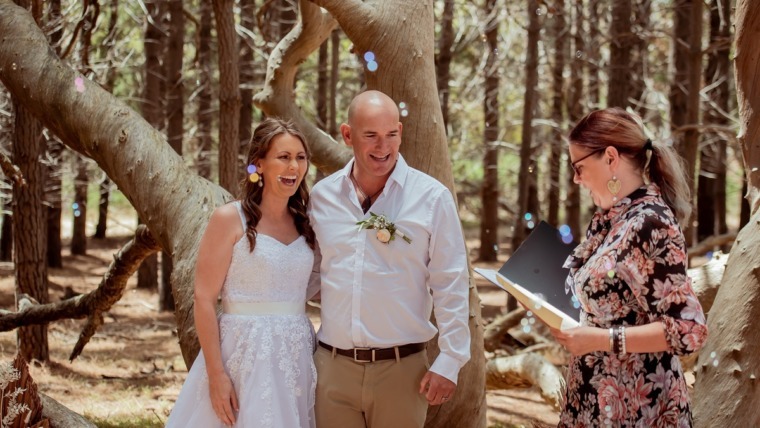
How To Set Boundaries
3 Tips To Create Relationship Rules
Written by Dr Melissa Keogh
Setting personal boundaries in relationships is an important skill to master, one which takes time, practice and patience.
Firstly, let’s talk about the definition of boundaries.
1. What Are Boundaries?
A boundary can be thought of as an invisible line between you and other people that is reflective of your values.
Healthy personal boundaries allow for saying ‘no’ to requests one feels uncomfortable meeting, to exit situations in which one doesn’t feel safe, to speak up about feelings and to be flexible and secure in close relationships to ‘open up’ and show an appropriate level of vulnerability.
2. Types Of Boundaries
There are three major categories of personal boundaries - rigid, porous and secure/healthy.
Individuals with rigid boundaries are often considered to have difficulty with intimacy and expressing emotion and (for fear of being rejected) keep others at a distance, including in romantic relationships. They are often closed-off and difficult to get to know.
People with porous boundaries tend to become overly involved in the lives of others, overshare personal information and are disrespectful to the self in order to be liked and/or keep the peace. They are too ‘open’.
A person with healthy boundaries is able to assertively communicate their wants and needs and values their own opinion over the opinion of others. They respect themselves and their values and they are neither defensive nor anxious in the face of boundary setting from others. They are open to dieback and safe, close relationships.
The following table from Therapistaid.com further illustrates these three categories:
| RIGID BOUNDARIES | POROUS BOUNDARIES | HEALTHY BOUNDARIES |
| Avoids intimacy and close relationships | Over-shares personal information | Values own opinions |
| Unlikely to ask for help | Difficulty saying ‘no’ to requests of others | Doesn’t compromise values for others |
| Has few close relationships | Over-involved with others’ problems | Shares personal information in an appropriate way (does not over or under share) |
| Very protective of personal information | Dependent on the opinions of others | Knows personal wants/needs & can communicate them |
| May seem detached, even with romantic partners | Accepting abuse or disrespect | Accepting when others say ‘no’ to them |
| Keeps others at a distance to avoid the possibility of rejection | Fears rejection if they do not comply with others |
So, how exactly does one set boundaries?
3. Tips For Setting Boundaries
Sometimes, setting boundaries can go smoothly – others respect our needs and values and the relationship remains intact. However, this is not always the case, especially with more difficult people such as those with aggressive, controlling, undermining or manipulative tendencies. In these cases, one needs to be more firm.
The first step in setting boundaries is, to be honest with yourself about your feelings and reactions when you first feel uncomfortable. Feeling uncomfortable or uneasy is a sign that your boundaries may be being crossed.
Secondly, be brave and ask yourself the following questions:
Why am I feeling uncomfortable?
What exactly am I responding to?
What has triggered this feeling?
What is the feeling exactly?
Thirdly, consider how you might best express your feelings and assert your boundary. Sometimes it’s not so easy to be assertive on the spot and you may need to buy some time with phrases such as “I’m sorry, I missed that, can you repeat what you just said?” or “I need to think about what you’ve just said, I’ll get back to you”.
Some boundary-setting language that may be helpful includes:
- I don’t feel comfortable with...
- I’m not sure how I feel about ...
- I’d like to help you but I feel like I’d be disrespecting myself if I...
- I need some time to think about this, can we come back to it?
- I need to address (....) with you
- Please respect my wishes about...
- I’ve put some though into this and it doesn’t sit right with me
- This doesn’t feel right/good to me
- This presents a boundary issue for me
- If I’m being completely honest, I...
Some full examples of setting a boundary may look like the following:
- Dad, I need to address the issue of money with you. When I communicate that I need space from the family you repeatedly offer me money and it feels quite controlling. I will make my own way financially, thank you.
- I feel very attracted to you and am enjoying spending time with you, although I’m not ready to engage in a sexual relationship just yet. I need a little more time for us to get to know each other. I hope you can understand.
- I feel uncomfortable with the fact that although you are separated from your husband, you are still living together and he has expressed he wishes to reunite with you. I am grateful for the time we have spent getting to know each other but I am ultimately unsure if your marriage has fully concluded and I need to exit this situation for now because I don’t feel safe.
- I know you don’t mean to upset me, but I do feel disrespected when you ask me deeply personal questions about my finances. I also feel undermined and I’d prefer not to have these kinds of conversations. Is that OK?
It’s important to communicate with a respectful tone of voice and absence of any aggression when setting boundaries (where possible) so as not to inflame the situation further. And keep in mind that if people aren’t used to you setting boundaries there may be some pushback. If you can, stand your ground, lovingly. You will be setting a great example.
If you need professional help to set boundaries, The Australian Psychological Society’s Find a Psychologist service may be of assistance.
Go well!
3 Tips To Create Relationship Rules 3 Tips To Create Relationship Rules 3 Tips To Create Relationship Rules


